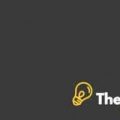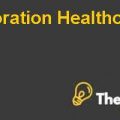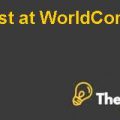
Healthcare Finance Organizational Analysis Case Solution
Ratio Analysis
It is a useful tool, which improves understanding of financial results over time. The manager used Ratio analysis in order to find the strengths and weaknesses, to form strategies that improve results.
1. Profitability Ratios:
Profitability Ratios measure a company’s profitability performance.
| Profitability Ratios | FORMULA | YEAR-1 | YEAR-2 | YEAR-3 | YEAR-4 |
| TOTAL MARGIN | NET INCOME/ TOTAL REVENUES | 3.07% | 3.27% | 3.59% | 4.14% |
| OPERTATING MARGIN | OPERTAING INCOME/TOTAL OPERTAING REVENUES | 13.98% | 14.50% | 14.89% | 14.79% |
| RETURN ON ASSTES | NET INCOME/ TOTAL ASSETS | 28.57% | 30.09% | 31.68% | 34.04% |
| RETURN ON EQUITY | NET INCOME / TOTAL EQUITY | 9.55% | 10.50% | 11.62% | 13.96% |
Total Margin:
Total margin measures the ability of a company to control its expenses. If the total margin is higher, it means company has lowered its expenses. This indicates that company effectively controls their expenses. According to the hospital, the total margin of the company has increased from year 1 to year 4. It means that Healthcare profit is increasing yearly because company is effectively controlling its expenses.
Operating Margin:
It is another way to measure the profitability of the company. The main advantage of this margin is that it only focuses on operating expenses. According to the hospital, the operating margin of the company has increased from 13.98% in year1 to 14.79% in year 4. It shows that an increase is sales is a result of successful control of company’s operating expenses.
Return on Assets:
Return on assets shows the manager how much the business has earned while using total assets. If ROA is increases in comparison to the previous year, the reason may be an increase in net income or a decrease in total assets. Whereas, opposite of this happens when ROA decreases. According to the hospital, its ROA also saw an increase from year 1 to year 4. It is because the net income of the company is increasing yearly as its total assets decrease.
Return on equity:
Return on equity indicates on how well the manager is using their equity in order to earn profits. According to the hospital, the ROE also increased from year 1 to year 4. This indicates that the hospital has used its equity effectively.
2. Liquidity Ratio:
This ratio shows how company is able to pay off its short-term debt. Higher value of ratio means a larger margin of safety. In other words, we can say that company is able to pay off their short term debt.
| Liquidity Ratio | |||||
| CURRENT RATIO | CURRENT ASSETS/CURRENT LIABILITIES | 4.7 | 4.5 | 3.9 | 4.0 |
| DAY CASH ON HAND RATIO | CASH AND EQUIVALENTS+ SHORT TERM INVESTMENTS/ (EXPENCES-DEPRICIATION)/365 | 9% | 11% | 5% | -7% |
Current ratio:
Current ratio measures how many current assets the company has in order to pay their current liability. The benchmark is 2:1 that shows that company should have the two times assets to pay 1 time of liability. Hence, in this case, the healthcare has a positive and greater than 2 current ratio. This shows that organization has the ability to pay its liabilities on time.
Days-cash-on-hand Ratio:
This measures the percentage amount to pay daily cash obligations while ignoring the new cash available for resources. A higher value is favorable for creditors. Hence, this shows that the excess cash in hand amount and short-term investment would lead to lower returns than long-term investments. Therefore, in last year the health care has -7%. Which is why the company should make short-term investments in order to get higher return. ..................
This is just a sample partial case solution. Please place the order on the website to order your own originally done case solution.













